Novel Strategies Enhancing Bioavailability and Therapeutical Potential of Silibinin for Treatment of Liver Disorders
- PMID: 39444787
- PMCID: PMC11498047
- DOI: 10.2147/DDDT.S483140
Novel Strategies Enhancing Bioavailability and Therapeutical Potential of Silibinin for Treatment of Liver Disorders
Abstract
Silibinin, a bioactive component found in milk thistle extract (Silybum marianum), is known to have significant therapeutic potential in the treatment of various liver diseases. It is considered a key element of silymarin, which is traditionally used to support liver function. The main mechanisms of action of silibinin are attributed to its antioxidant properties protecting liver cells from damage caused by free radicals. Experimental studies conducted in vitro and in vivo have confirmed its ability to inhibit inflammatory and fibrotic processes, as well as promote the regeneration of damaged liver tissue. Therefore, silibinin represents a promising tool for the treatment of liver diseases. Since the silibinin molecule is insoluble in water and has poor bioavailability in vivo, new perspectives on solving this problem are being sought. The two most promising approaches are the water-soluble derivative silibinin-C-2',3-dihydrogen succinate, disodium salt, and the silibinin-phosphatidylcholine complex. Both drugs are currently under evaluation in liver disease clinical trials. Nevertheless, the mechanism underlying silibinin biological activity is still elusive and its more detailed understanding would undoubtedly increase its potential in the development of effective therapeutic strategies against liver diseases. This review is focused on the therapeutic potential of silibinin and its derivates, approaches to increase the bioavailability and the benefits in the treatment of liver diseases that have been achieved so far. The review discusses the relevant in vitro and in vivo studies that investigated the protective effects of silibinin in various forms of liver damage.
Keywords: bioavailability; liver disease; silibinin-C-2‘3-dihydrogen succinate; silibinin-phosphatidylcholine complex; silybin.
© 2024 Selc et al.
Conflict of interest statement
The authors report no conflicts of interest in this work.
Figures

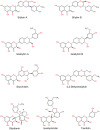


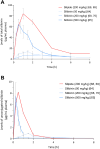

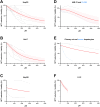
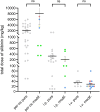
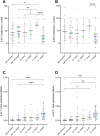
Similar articles
-
Erythrocyte membrane-camouflaged mesoporous silica composite nanoparticles for loading and controlled release of the hepatoprotective agent silibinin: A-synthesis and physicochemical characterization.J Pharm Pharmacol. 2024 Aug 2;76(8):995-1005. doi: 10.1093/jpp/rgae046. J Pharm Pharmacol. 2024. PMID: 38762907
-
Efficacy and Mechanisms of Silybum Marianum, Silymarin, and Silibinin on Rheumatoid Arthritis and Osteoarthritis Symptoms: A Systematic Review.Curr Rheumatol Rev. 2024;20(4):414-425. doi: 10.2174/0115733971266397231122080247. Curr Rheumatol Rev. 2024. PMID: 38314596
-
Silybin: A Review of Its Targeted and Novel Agents for Treating Liver Diseases Based on Pathogenesis.Phytother Res. 2024 Dec;38(12):5713-5740. doi: 10.1002/ptr.8347. Epub 2024 Sep 23. Phytother Res. 2024. PMID: 39310970 Review.
-
Silibinin as a major component of milk thistle seed provides promising influences against diabetes and its complications: a systematic review.Naunyn Schmiedebergs Arch Pharmacol. 2024 Oct;397(10):7531-7549. doi: 10.1007/s00210-024-03172-x. Epub 2024 May 27. Naunyn Schmiedebergs Arch Pharmacol. 2024. PMID: 38801454
-
Modulatory effects of silibinin in various cell signaling pathways against liver disorders and cancer - A comprehensive review.Eur J Med Chem. 2016 Nov 10;123:577-595. doi: 10.1016/j.ejmech.2016.07.070. Epub 2016 Jul 29. Eur J Med Chem. 2016. PMID: 27517806 Review.
Cited by
-
Therapeutic potential of flavonoids from traditional Chinese medicine in pancreatic cancer treatment.Front Nutr. 2024 Nov 22;11:1477140. doi: 10.3389/fnut.2024.1477140. eCollection 2024. Front Nutr. 2024. PMID: 39650709 Free PMC article. Review.
-
Isosilybin B: a potential novel therapeutic agent with hepatoprotective, anticancer and antifibrotic properties.Discov Oncol. 2025 Aug 8;16(1):1502. doi: 10.1007/s12672-025-03380-8. Discov Oncol. 2025. PMID: 40779034 Free PMC article.
References
-
- Kalra A, Yetiskul E, Wehrle CJ, Physiology TF. Liver.; Treasure Island. (FL): StatPearls Publishing; 2023. - PubMed
Publication types
MeSH terms
Substances
LinkOut - more resources
Full Text Sources
Medical

